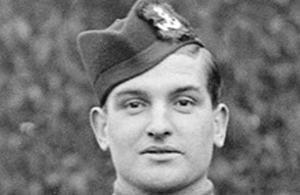WW1 United States of America VC recipient William Henry Metcalf
The story of the United States of America First World War Victoria Cross recipient William Henry Metcalf.

William Henry Metcalf [Credit: National Defence Canada]
5 men from the United States of America received the Victoria Cross, Britain’s highest award for gallantry, during the First World War. As part of the Centenary Commemorations the people of the United Kingdom marked their gratitude to those courageous men by presenting a bronze memorial plaque to their home country engraved with their names. The plaque is now displayed at the Arlington National Cemetery. This archive tells their stories.
Name: William Henry Metcalf
DOB: 29 January 1885
Place of Birth: Waite, Maine, USA
Date of Action: 2 September 1918
Place of Action: near Cagnicourt, France
Rank: Lance-Corporal
Regiment: 16th Infantry Battalion, Canadian Expeditionary Force
William Henry Metcalf was born in Maine in the United States on 29 January 1885. He was working as a barber when he left for Canada upon the outbreak of the First World War and enlisted in the Canadian Expeditionary Force.
Lance-Corporal Metcalf was awarded his Victoria Cross for his actions on 2 September 1918 near Cagnicourt in France, during the Second Battle of Arras. His citation states:
For most conspicuous bravery, initiative and devotion to duty in attack, when, the right flank of the battalion being held up, he realised the situation and rushed forward under intense machine-gun fire to a passing Tank on the left. With his signal flag he walked in front of the Tank, directing it along the trench in a perfect hail of bullets and bombs. The machine-gun strong points were overcome, very heavy casualties were inflicted on the enemy, and a very critical situation was relieved. Later, although wounded, he continued to advance until ordered to get into a shell hole and have his wounds dressed. His valour throughout was of the highest standard.
Metcalf received his Victoria Cross from King George V on 26 January, 1919. He married an English nurse, and returned to the USA where he worked as a mechanic. He died in 1968 in Maine.